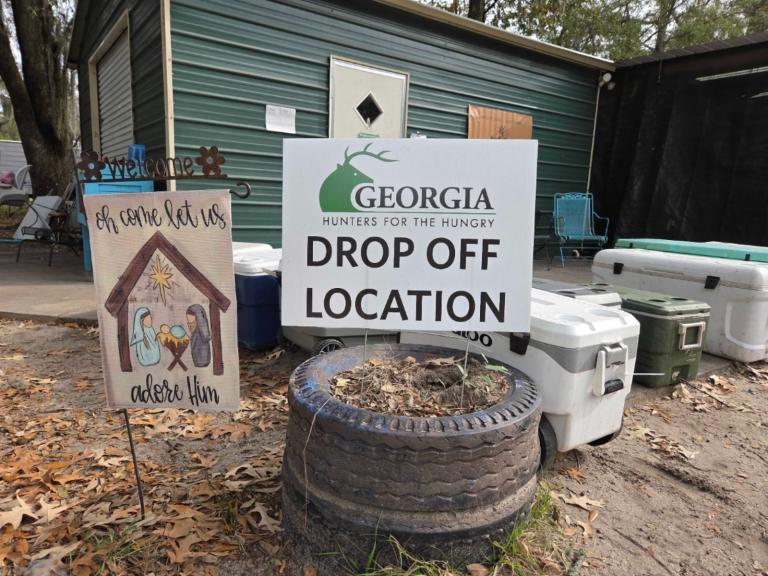Things are grim in Iowa, arguably the epicenter of global industrial food production.
If Iowa were a nation, it would be the globe’s second-largest corn producer, behind only China. The state leads the U.S. [PDF] in the production of corn, hogs, and eggs, and ranks number two in soybeans.
In short, it’s a rotten place for a massive, flood-inducing early-summer deluge. Of the state’s 99 counties, 24 have been declared disaster areas by the federal government (the state has designated 83 counties disaster zones). Thirty-six thousand people have been displaced. Sixteen percent of the state’s 25 million acres of farmland lies underwater. Already, 1.3 million acres of corn and 2 million acres of soybeans have been lost. In many areas, surviving crops are stunted and will likely produce subpar yields. (Numbers from Associated Press.)
In last week’s Victual Reality column, I looked at how this calamity will affect eaters who rely on the global food system for sustenance — i.e., almost everybody in the industrialized north, and most urban dwellers in the southern hemisphere. (Update: Corn futures flirted with $8/bushel Monday — nearly double last year’s price, which had more than doubled the previous year’s.)
Now it’s time to ask what it means for the Mississippi River. As Iowa’s farmland got hammered by rain, massive amounts of agrichemicals leached from soils, flowing into streams and eventually the Mississippi. Then you’ve got the concentrated-animal feedlot operations (CAFOs) and their infamous manure lagoons.
The Mississippi is the source of drinking water for some 70 U.S. cities and towns, from the Upper Midwest to the Gulf of Mexico. Of course, the Mississippi drains into the Gulf, so what it carries with it has huge ecological implications for the Gulf itself.
How bad is it? Things remain too chaotic to get a precise picture, but early indications aren’t encouraging.
I can find no news accounts detailing how well the vast cesspools that store waste from Iowa’s hog factories are holding up. Susan Heathcote, water program director of the Iowa Environment Council, told me in an email that she hadn’t seen estimates for losses of fertilizer or animal waste, but that they’re “sure to be huge.”
As for fertilizer, one Iowa State University agronomist told Bloomberg that saturated soils — not just in Iowa but in a swath stretching from South Dakota to Ohio — are now losing fertilizer at the alarming rate of 4 percent per day.
Heathcote added in her email that the recent storms are only the latest episode in what’s been a dreadful 2008 for nutrient runoff in Iowa. Typically, CAFO operators dispose of hog waste — loaded not only with nitrogen and phosphorous, but all manner of dodgy chemicals and pharmaceuticals — by spreading it on nearby farmland as fertilizer.
That strategy had particularly devastating results this year, Heathcote wrote:
Even before the major flooding started we had record levels of ammonia running off cropland, mostly related to manure applications on frozen ground or on top of the snow over the winter months. While this occurs every spring, it was particularly bad this spring because of the unusually large amount of snow we received over the winter and the rapid snowmelt we experienced this spring that washed manure and fertilizer off of cropland into our rivers.
She pointed me to an alarming Des Moines Register article, published April 6, on that topic. According to the Register, municipal water facilities in Des Moines were having to quadruple the dose of chlorine to kill all the bacteria and pathogens that had entered the water supply.
Mary Skopec, who heads the state’s monitoring of 79 river sites, said state biologists usually find ammonia level too low to measure. An ammonia reading of more than 0.1 parts per million is considered damaging to fish and the tiny creatures and plants on which they feed. In February and March, readings ranged up to 2.6 parts per million in major Iowa streams, and several times that in tributaries.
Heathcote also pointed me to a chilling report [PDF] from the Louisiana Universities Marine Consortium on the level of nitrates gushing from the Mississippi into the Gulf of Mexico, where they feed an annually recurring, New Jersey-sized algae bloom that blots out fish life. (I reported on the “dead zone” last week.) This vast annual gusher of nitrates stems largely from runoff of nitrogen fertilizers on Midwest farmland.
As of May, the researchers had found that the nitrate load from the Mississippi draining into the Gulf would be 37 percent higher than last year — “the highest since measurements began in 1970.” The storms that lashed the Midwest last week will likely drive that number further into the stratosphere.
Thus, while it’s still too early to figure out just much nasty stuff has leached out of Iowa’s farms and into its streams from the storms, we know that 2008 was already shaping up to be a dreadful year for runoff.
I hope the storms and their consequences force us to reconsider the idea of hinging our food system on chemical-intensive farming and CAFOs in the Mississippi River Basin.
I can’t stop thinking about an email I received Monday from Marian Kuper, the Iowa farmer and anti-CAFO activist I met while reporting from the state last year.
Kuper and her husband run a 250-acre corn-and-soy farm (small by Iowa standards) as well as raise beef cows on pasture. They farm in Hardin County, which houses a million hogs in CAFOs and just 18,000 people. Here’s what she wrote:
We’ve had way too much rain, cold temps and high winds, so the crops are unusually short, with poor root systems, and we have not been able to get all our soybeans planted, but with any luck we’ll still have a harvest. It’ll just be on the small side. A lot will depend, now, on whether we can get back to normal summer weather and on how early the frost comes in the fall.
My garden veggies have really taken a hit, but the good news is that our cows are loving the lush pasture we’ve got.
We should remember that the Midwest’s prairies supported “lush pasture” for ruminants for thousands of years, and have been under blankets of corn and soy for fewer than 200. Maybe the Kupers, with their diversification strategy in the land of monoculture, have the right idea.
I’ll be following this story closely in the days ahead.



